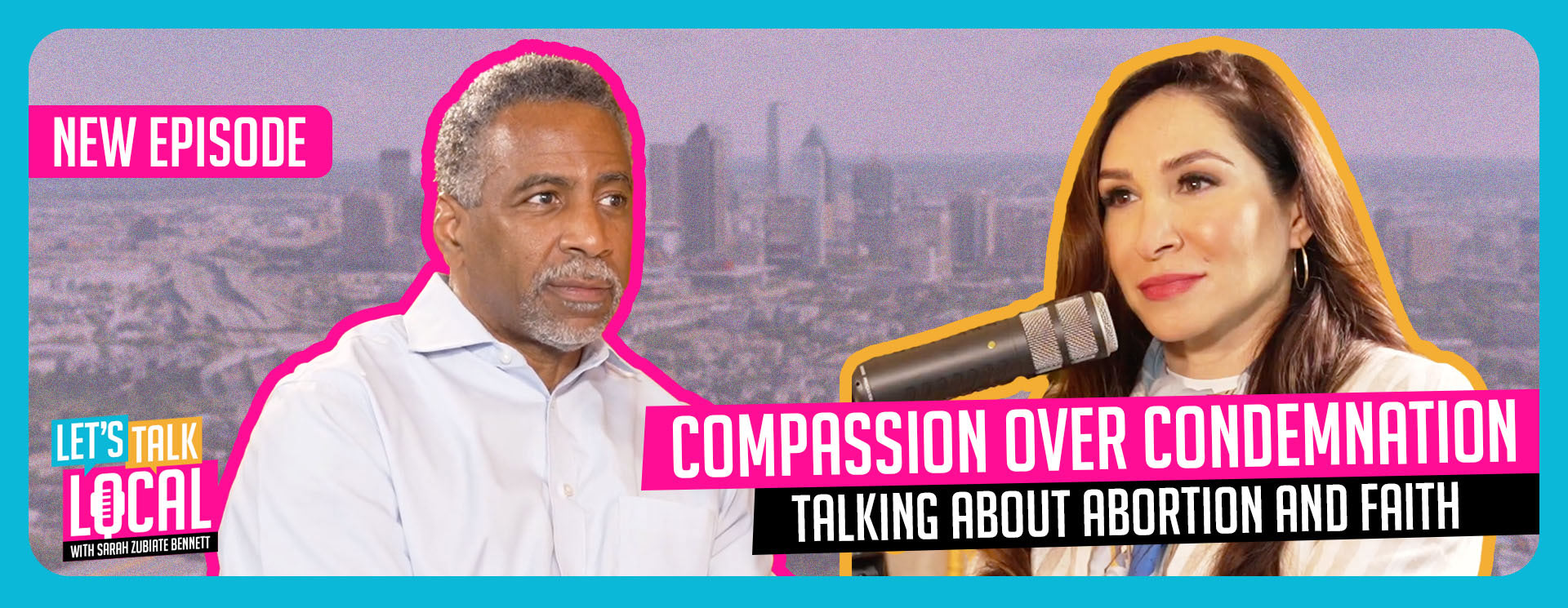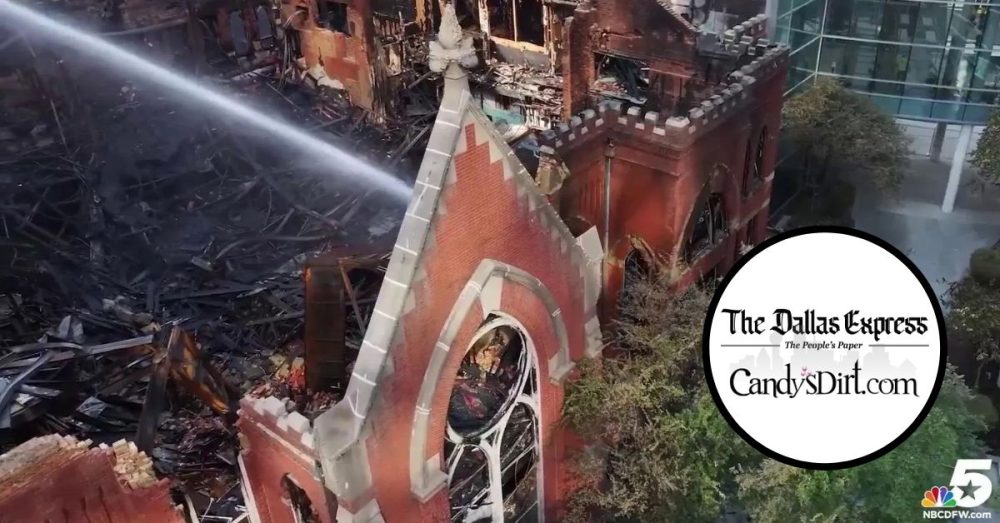(Candy’s Dirt) – There is good news in the preservation world today. First Baptist Dallas Senior Executive Pastor Ben Lovvorn said in a video to the congregation late yesterday that the city has approved efforts to begin preserving the historic walls. Success is not a given, but as Lovvorn said in the video, “We will do everything we can to save these exterior walls of our historic sanctuary.”
Historic buildings are our architectural and cultural heritage. They ground us and connect us to our past. That’s, in large part, why so many of us, regardless of our faith, have been deeply affected by the fire at First Baptist Dallas that destroyed the historic sanctuary last Friday.
Although the First Baptist Church of Dallas was established in 1868, the historic sanctuary in downtown Dallas dates to 1890. It was dedicated on June 7, 1891. If you remember your seventh-grade history, Dallas was founded in 1841, and the Dallas County Courthouse in 1892. So this historic church was one of the oldest buildings in our city.
The First Baptist Dallas sanctuary is described in the “AIA Guide to Dallas Architecture” as “downtown’s finest remaining Victorian-era structure, combining Gothic Revival and Romanesque details in a confident display of Mannerist design.”
Albert Ullrich was the architect for the church and the contractors were Watson and Beggs. The total cost was $90,000. Ullrich designed a polychromed corner spire, which was replaced by the current pre-fab steeple.
Albert Ullrich, architect, left yesterday for an extended northern tour. Among other professional business, he will have special designs prepared in stained glass, set with jewels, for the First Baptist church of this city to harmonize its modern style of architecture, which he is at present erecting on the corner of Patterson Avenue and North Ervay Street.
The Dallas Morning News, October 2, 1890
There have been many changes over the life of the sanctuary. According to Jim Pike, one of the historians for First Baptist Dallas, the church was reoriented from east-west to north-south during the 1908 expansion.
In 1924, there was another expansion, and the building was squared out, moving the pulpit to the middle and facing Ervay, making it again east-west. Because of all of these changes, the building was not totally symmetrical. In each expansion the interior was gutted and totally rebuilt inside. The sanctuary was enlarged in 1908, and the direction changed to north-south.
First Baptist Dallas Historian, Jim Pike
Senior Pastor Robert Jeffress leads the 14,000-member church and made it clear that every effort will be made to preserve the historic walls that are still standing. Jeffries was baptized and ordained for the ministry here. “I’m grateful that the church is not bricks and mortar or wood. It’s people.”
However, the bricks and mortar still mean a lot to Dallas. Everyone has expressed how much they want the three remaining walls saved.
I reached out to one of our most respected preservation architects to offer his insights. Norman Alston has been instrumental in multiple high-profile preservation projects in Dallas, winning preservation awards for restoration work on The Lakewood Theater, The US Post Office Courthouse Building, and Woodrow Wilson High School, to name only a few.
The standard assumption in cases like this is that the tremendous heat generated by the fire also compromised the mortar in the masonry exterior walls, dictating demolition. However, when you have a catastrophic fire in a building like this one, where the exterior walls are masonry, and all of the roof and the interior are wood, often the fire and heat move quickly through the roof and ventilate out the top. This greatly increases the chance that the walls didn’t overheat to the point that they can’t be reused. I saw a three-story school built this way that had a catastrophic fire. Like First Baptist Dallas, the roof and floors burned and collapsed, but the wood window interior trim on the brick walls was left mostly intact.
Preservation Architect, Norman Alston
In the video to the congregation, Lovvorn added, “When you arrive on campus next, this is going to look very different. There will be a new structure of scaffolding and cabling that is built around the walls of this historic sanctuary. That is being put in place to secure those walls and keep them in place so we can begin demolishing the site, cleaning the site, and ultimately coming back and rebuilding this structure in an even greater way that will facilitate the gospel work of the First Baptist Church of Dallas.”


